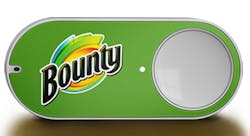Is Amazon’s Dash Button a Boost to Supply Chain?
The Amazon Dash, announced on March 31, is a small oval electronic device about the size of a pack of gum that uses Wi-Fi to send a message to your Amazon account, automatically ordering a new stock of whatever product is running low in your house.
The buttons, which use an adhesive strip or plastic clip to attach to various places in your house, is emblazoned with the name of a different product.
Currently available toWhat’s available through this service? Items such as coffee, detergent, razors, toilet paper, diapers, wipes, juice, dog food, trash bags, macaroni and cheese and napkins, are available.
“Most of us know that Amazon is always thinking out-of-the-box for ways to offer faster and more efficient service to its customers using everything from its “flow meister” warehouse management software to the use of drones for product delivery,” says Paul Myerson, professor of Practice in Supply Chain Management, Lehigh University. In an article on IndustryWeek he explains:
But this idea (and it is more than an idea) may eventually have a huge impact on the retail order fulfillment process with potential rippling effects up the supply chain.
For example, think about the potential for improved forecast accuracy for not only retailers but manufacturers and distributors as now, in addition to having individual store data such as point-of-sale (POS) and inventory-level information, they would have visibility into what is going on in the actual customer household, demand- and inventory-wise.
This puts added pressure on retailers, especially grocers who have very small profit margins (1-2%), forcing them to concentrate not only their own internal efficiencies using tools such as lean techniques, omni-channel distribution, etc., but also brings new reach to the concept of focusing on value to the customer and eliminating waste, not only in the business environment, but now at the actual home of the consumer.
The Dash button is clearly smart for Amazon and for the brands,” says Mary Nahorniak of USA Today. “ It means more repeat, regular business that surely pays for the hardware many times over. It may mean more loyalty and brand affinity in the long run. I suspect it will also mean happier customers, who now have more brain space to do the things that matter. “
